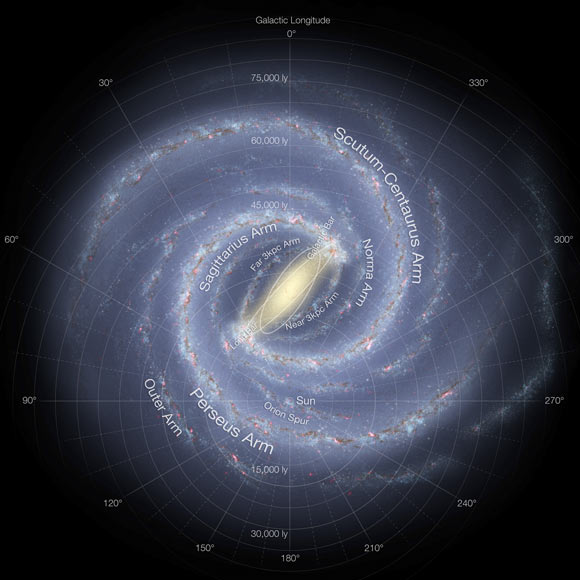
The distant outskirts of our Milky Way Galaxy harbor valuable clues for understanding the formation and evolution of the Galaxy.
Yet, due to overwhelming distances and an extremely sparse population of stars, many objects have not been identified beyond 400,000 light years, with only seven stars known to date beyond this limit.
The team led by Prof John Bochanski of Haverford College has now discovered two stars in the Milky Way's outer halo that are the most distant ever discovered in our Galaxy.
"The distances to these two stars are almost too large to comprehend. To put it in perspective, when the light from ULAS J001535.72+015549.6 left the star, our early human ancestors were just starting to make fires here on Earth," said Prof Bochanski, who is the first author of a paper published in the Astrophysical Journal Letters (arXiv.org).
The significance of the discovery goes beyond their record-holding distances because they inhabit the Milky Way's halo.
"Some astronomers think that the halo is like a cloud of galactic crumbs, the result of the Milky Way's merger with many smaller galaxies over our Galaxy's lifetime," explained co-author Dr Beth Willman of Haverford College.
"Theory predicts the presence of such an extended stellar halo, formed by the destroyed remains of small dwarf galaxies that merged over the cosmic ages to form the Milky Way itself."
"The properties of cool red giants in the halo thus preserve the formation history of our Milky Way. These stars are truly ghosts of galaxies past."
By assembling a larger sample of distant red giants, the team hopes to test model predictions for the formation of the Milky Way.
"Most models don't predict many stars at these distances. If more distant red giants are discovered, the models may need to be revised," Prof Bochanski said.
"The search in the outer reaches of our Milky Way goes on, using the brightest stars to guide the way."



Reader Comments
to our Newsletter